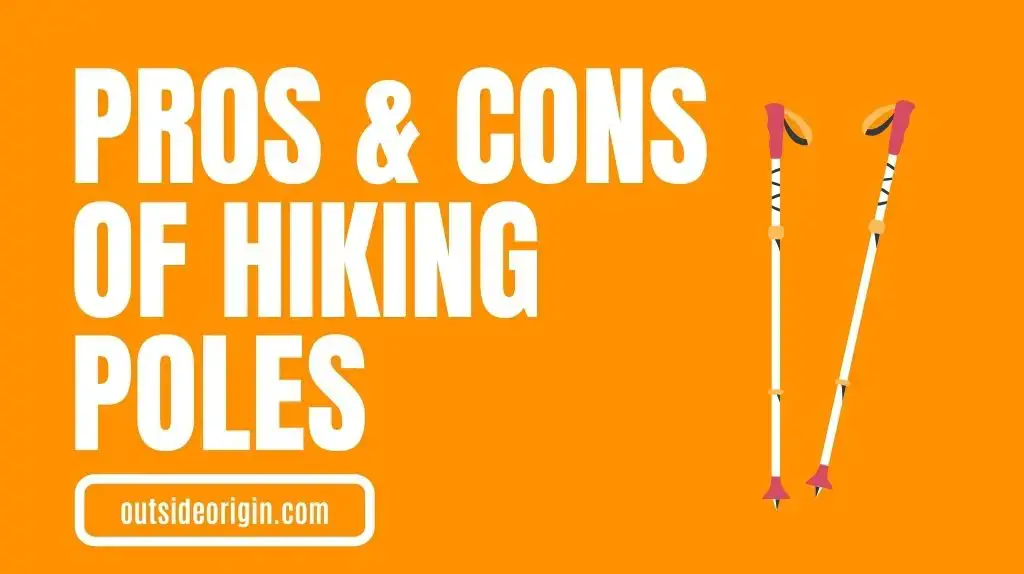Many walkers, hikers, trekkers, backpackers, and snowshoers use trekking poles and hiking staff as basic equipment. The reasons are straightforward: They improve your stability and give you assistance on any kind of terrain.
Is trekking/hiking pole necessary?
Although trekking poles are not absolutely compulsory equipment, many hikers opt to use them because of the numerous advantages they give. While hiking, trekking poles relieve a lot of the pressure on your joints and can assist you in maintaining balance in a variety of challenging terrain.
What is the point of a trekking/hiking pole?
Hikers typically use trekking poles to add rhythm to their walking pace and give additional assistance. They aren’t essential on flat, smooth terrain, but they can boost the amount of exercise a hiker gets as well as the pace of the journey.
They give excellent lateral stability on less stable terrain or steep hills, and many people use them to deal with knee problems. They can also be used as climbing aids, to investigate the depth of mud or water, and to make a crossing easier.
Are Folding Hiking Poles good?
The main advantage of folding trekking poles, or hiking poles in general, is the portability they enable. They take up less room in your pack because they fold up. In reality, most non-folding poles are too lengthy to be carried in a pack. Additionally, if you intend to go to your camping area by airline or public transportation, folding poles will be easier to pack and keep in your luggage. They’re also more practical for city people to wear when strolling, as they fold up conveniently when you want to stop by your favourite coffee shop or do grocery shopping before returning home.
There are a few more scenarios when folding poles can be very useful. Those who regularly need their hands free, for example, may welcome the ability to conveniently store their folding trekking poles in their pack. While floating on inflatable rafts, it may also be safer to utilise folding poles (which may be brought in your bag).
Pros and Cons of Hiking With Trekking/Hiking Poles

Pros of hiking with trekking poles
- Trekking poles relieve joint stress – The most significant benefit of hiking with trekking poles is that they absorb some of the shocks that your joints get when you step – particularly on ascents and descents.
- Make something for your arms to do! – On the hiking trails, every day is leg day. You may not be using your arms much unless your trek includes rock scrambles or bushwhacking. Trekking poles offer your arms a workout and can help prevent swelling in your hands as you gain altitude.
- While ascending, dangling your arms at your sides might promote poor circulation, causing swollen fingers, palms, and wrists. The pumping motion of trekking poles, along with keeping your arms raised, promotes improved circulation and can help reduce oedema.
- Keeping your equilibrium – What’s better than two legs? There are four legs. When conquering difficult terrain, trekking poles operate as an extra set of limbs to provide you with additional stability. When crossing quickly moving water, traversing snowfields and ice patches, walking along narrow ridgelines, and climbing up or down a hill on the loose ground like sand or scree, poles can help you stay balanced. Trekking poles are also utilised to stay upright while fighting heavy winds on a few occasions.
- Ice strength and water depth may be tested using poles. It might be difficult to tell how deep a water crossing is or how thick the ice on a frozen stream is. Trekking poles can take the guessing out of crossing risks and keep you safe.
Cons of hiking with trekking poles
- Weight – Some people choose to just use their poles on uphill and downhill trails. In the meanwhile, the poles are hidden on their packs, which adds to their overall carrying weight.
- You might be expending more energy – It’s well acknowledged that walking with trekking poles expends more energy than walking without them. There hasn’t been much research on this, and some individuals are divided on the subject. A little additional arm workout isn’t always a bad thing and that if the stress-relieving advantages of trekking poles are a good fit for you, the extra energy invested is likely well worth it.
How are trekking/hiking poles different from a walking stick?
Trekking poles are a pair of two sticks that absorb shocks. It also gives you great balance because there are two sticks one in each hand. It also has a loop to hold and a grip to grab tightly.
Whereas walking sticks are generally made up of wood which feels natural in hand but it cannot absorb shocks.
Is one hiking pole enough?
Carrying two trekking poles might be really useful if you’re travelling over challenging, slick terrain or across rivers. If you’re going on a short trek that’s not too difficult, one pole can be plenty. Others might choose for a hike without the need for poles.
Conclusion
I hope you found this article on what type of pole you need and a few other questions regarding trekking poles. If you have any questions or concerns let me know in the comments down below!
Can You Do Me A Small Favor?
I have put a lot of time & effort into writing this post to provide you with the best info out there.
It’ll help me out if you could consider sharing it on your social media networks. You are also allowed to take any photo you want from my blog as long as you credit and link back!
Appreciate it! ❤️️

Hey, I am the founder of Outside Origin! I love hiking in my spare time and have gone to various different hikes. You can check out our about us section to learn more about what our team and I do over at Outside Origin.




